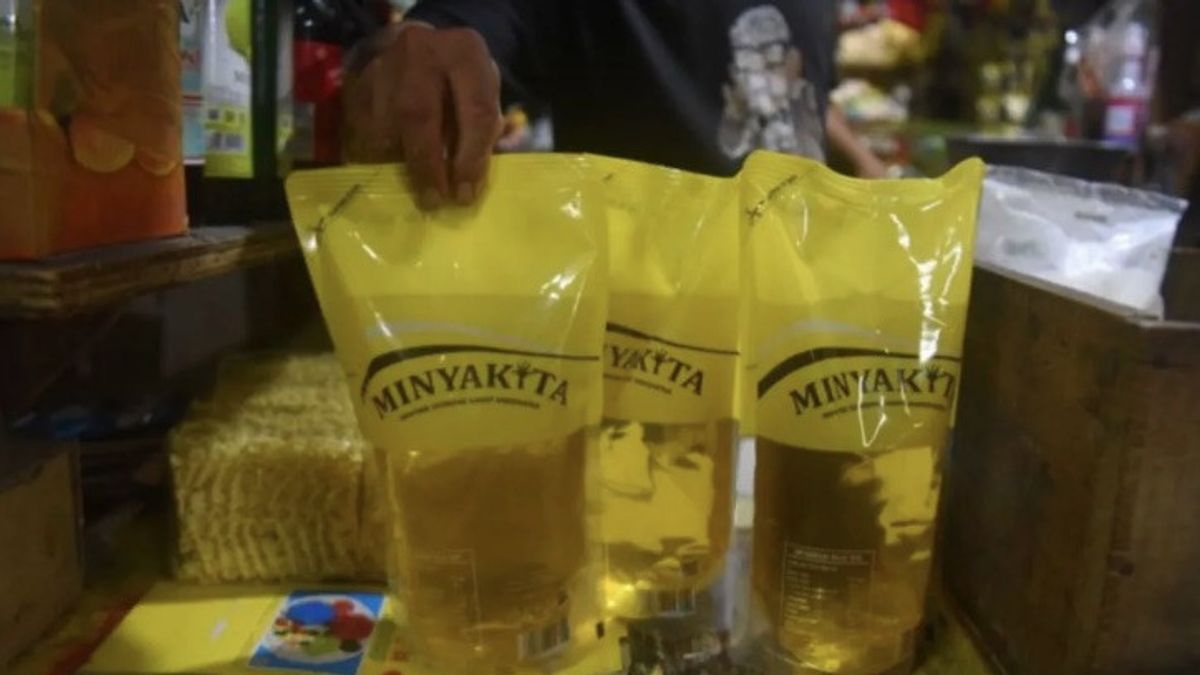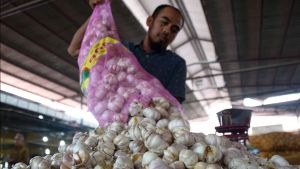JAKARTA The highest retail price (HET) of people's cooking oil or Minya Kita will increase to Rp15,700 per liter, after previously the government's cooking oil was sold for Rp14,000 per liter. The government is considered to have failed to monitor and maintain price stability. People are again victims.
The plan to increase the price of OilKta was revealed directly by the Minister of Trade Zulkifli Hasan. However, the man who is familiarly called Zulhas ensures that Minya Kita is still easy to obtain in the market.
"Our oil has been, the price starting next week has been adjusted to Rp. 15,700 per liter," said Zulhas at the Kauman Mosque, Yogyakarta, Saturday (6/7/2024).
The increase in subsidized cooking oil prices is only one of a series of government policies that are considered to be increasingly strangling the community, especially the middle class and middle class candidates.
Minya Kita is one of the breakthroughs made by the Minister of Trade Zulkifli Hasan. He took the initiative to package bulk cooking oil so that the distribution process to the community is easier.
Zulhas then launched the MinyaKita packaged bulk cooking oil product at the Head Office of the Ministry of Trade, Jakarta, on July 6, 2022. Minya Kita was released as an effort to flush cooking oil in the market which was currently scarce. In addition, this is an effort by the government to provide cooking oil at affordable prices to the public.
Initially, Minya Kita was released specifically for the lower middle class and micro-enterprises to reduce the increase in food prices that depend on cooking oil.
However, over time, Minya Kita's cooking oil, which was originally set at Rp. 14,000 per liter, has now reached Rp. 15,000 to Rp. 16,000 per liter in a number of regions or an increase above HET.
Previously, the Director of Basic Materials and Important Goods of the Directorate General of Domestic Trade of the Ministry of Trade, Bambang Wisnubroto, admitted that the increase in the price of Minya Kita occurred due to the minimal domestic market obligation (DMO) supply.
Meanwhile, the government's plan to increase the HET Minya Kita will not have an impact on the production of crude palm oil (CPO) or crude palm oil farmers in Riau Province.
Chairman of the Indonesian Palm Oil Entrepreneurs Association (Gapki) Riau Lichwan Hartono explained that the increase in HeT Minya Kita would not have any effect on CPO production in the area.
"The increase in HeT Minya Kita has no effect on the ups or downs in FFB and CPO production," he said.
In line with Lichwan Hartono, economist at Riau University, Edyanus Herman Halim, also said that the government's policy of increasing the HET of Minya Kita would not have an impact on the price of fresh fruit bunches (FFB) for palm oil received by farmers.
"The increase in the HET of Minya Kita cooking oil will be seen first, what is the reason, if to reduce the subsidy budget issued by the government has no effect on the price of FFB, it will only return the selling price of cooking oil to the market mechanism," said Halim.
Seeing today's policy, according to Halim, the most impact is the final consumer because the price continues to skyrocket. Whereas at the beginning of the emergence, Minya Kita was a guard and stabilizer of domestic cooking oil prices.
Director of the Center of Economic and Law Studies (Celios) Bhima Yudhistira said that if the price of Minya Kita also increases, it means that the government has failed to monitor and maintain price stability.
The government's increase in the HET of cooking oil for the people of Minya Kita has also cornered the position of middle class in Indonesia.
According to the World Bank, community economic groups can be divided into several groups based on the amount of expenditure per month. Starting from poor classes whose expenses are less than Rp354,000 per month, vulnerable classes with expenditures of Rp354,000 to Rp532,000 per month, while prospective middle class expenditures of Rp532,000 to Rp1,200,000 per month.
Finally, there are middle and upper class whose expenses are Rp. 1,200,000 to Rp. 6,000,000 per month and more than Rp. 6,000,000 per month.
From the grouping based on the amount of expenditure every month, the middle class and the middle class candidates are included in the lower middle income class.
The lower middle class is the most dominant in the Indonesian population, which is 69.05 percent. This middle class group and middle class candidates were the ones most shaken when Indonesia's economic conditions were not doing well. They can even be threatened with lower classes.
According to a consumer survey of Bank Indonesia in May 2024 compared to the previous month, the proportion of revenue for consumption decreased from 73.6 percent to 73 percent, while the proportion of income to pay debt or installments increased from 9.7 percent to 10.3 percent. The proportion of income to be stored or saved stagnant alias did not change, namely 16.6 percent.
Based on the survey, spending on savings also continues to decline from year to year. From 20.3 percent in 2017 to only 15.7 percent in 2023.
On the other hand, the amount of income used to buy primary needs has soared. In January 2023, the amount of revenue used for basic needs was only 13.9 percent, but this figure jumped to 26 percent in May 2024.
SEE ALSO:
That means, the increase in the price of basic commodities makes spending even greater, which has an impact on weakening purchasing power. Unfortunately, the increase in the price of basic commodities is not offset by the rate of income. In the end, the number of savings owned by the middle class tends to stagnate and even often falls behind to meet daily needs.
This phenomenon makes the middle class and middle class candidates vulnerable groups. If you look at income, this group is no longer worthy of receiving government social assistance, but on the other hand, their income is also considered incomparable to the larger expenditure due to the high cost of basic necessities.
The increase in the HET of cooking oil for the people of Minya Kita will have a domino effect in the joints of people's lives.
The English, Chinese, Japanese, Arabic, and French versions are automatically generated by the AI. So there may still be inaccuracies in translating, please always see Indonesian as our main language. (system supported by DigitalSiber.id)


















